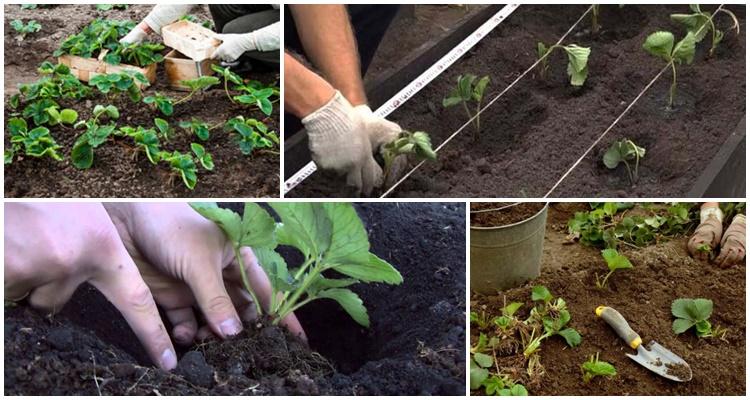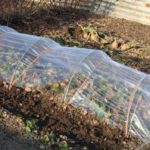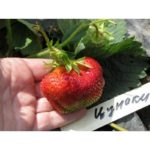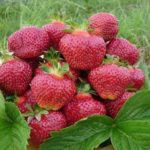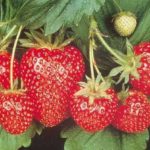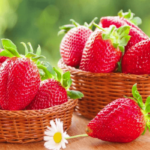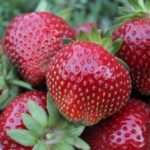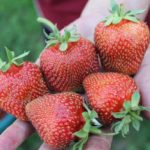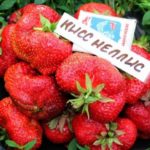Japanese strawberry varieties have interesting characteristics and taste. Let's consider a description of the Tsunaki strawberry, the advantages and disadvantages of the variety, features of cultivation and care, and reproduction. How to treat plants for diseases and protect them from infections and pests. When and how to harvest and how to store it in the household.
Characteristics and description of Tsunaki strawberries
The variety is not remontant; the fruits ripen in the mid-late period.Made in Japan. Produces large berries that have a good taste. The variety is productive and adapts well to different climatic conditions.
Tsunaki strawberry bushes are powerful, with tall leaves, spreading. Height – 50 cm, plant width reaches 60-70 cm. Developed roots, medium foliage. There are few whiskers, but they are strong and thick. The flower stalks are tall, strong, and fall to the ground under the weight of the berries. The leaves reliably cover them from burns.
The berries of the Tsunaki variety are first comb-shaped, then wide-conical, weight - 100-120 g, diameter - up to 7 cm. By the end of the season, the berries become smaller. The skin and flesh are red, the flesh is dense and juicy. The taste is sweet, with a caramel tint, the aroma is strawberry, with a nutmeg tint. The fruits can be eaten fresh, processed, canned, or frozen. They do not leak during transportation and do not wrinkle.
Pros and cons of the variety
Cultivation
The cultivation of the Japanese variety follows the same pattern as most other varieties of the crop. But first you need to choose and prepare the seedlings correctly, and allocate an area for planting.
Selection and preparation of a site
Tsunaki strawberries are planted in a sunny area, protected from the winds. Can be planted near buildings and fences. The area should be flat, not swampy. The soil is prepared as follows: dig up, add humus, compost and ash. Everything is mixed and leveled.
How to choose seedlings
Tsunaki seedlings are chosen to be uniform, with a developed root system, and large green leaves. Neither the roots nor the leaves should show signs of disease or damage by pests. A day before planting, the roots of the mustache are soaked in a solution of drugs - root formation stimulants. This treatment speeds up the survival rate of transplanted plants.
Correct fit
Plants of the Tsunaki variety are planted at a distance of 60 cm. It is not advisable to plant them more densely, as the yield will decrease. Planting sequence: make holes in the area 2 times deeper than the size of the roots, plant a strawberry in each, sprinkle the roots up to the neck and water. Compact the soil and cover with a layer of mulch.
Plant care tips
You need to carefully care for the Tsunaki variety; unkempt strawberries will not bring a good harvest. The fruits will be small, sparse and tasteless.
Watering and fertilizing
Strawberry plants simply need water and nutrients; if the nutrition is poor, they will not be able to grow large berries, and this is the main advantage of the variety. Therefore, you need to water the beds at least once a week, in hot summers - 2-3 times. During the rainy season, it is possible to do without watering; waterlogging is just as harmful to strawberries as lack of moisture. This causes the berries to become covered with gray rot.
Winter period
Tsunaki strawberries need to be prepared for winter: securely covered with mulching material in a thick layer. But before that, cut off all the dry leaves, collect them and the old mulch and burn them.Removing leaves and mulch will reduce the likelihood of pests and infections overwintering.
Diseases and pests
The Tsunaki variety suffers from fungal and bacterial diseases no more often than most strawberry varieties. During the fruiting season, the berries may become covered with gray rot. Control and prevention measures: spraying bushes with biological fungicides. It is better not to use powerful agricultural preparations, as their effect affects the fruit.
Protect strawberries from slugs by sprinkling ash paths around them. Slugs cannot crawl through the powder and do not harm plants.
Culture propagation
In one place, strawberries of this variety can bear fruit for 5-7 years. Then it needs to be transplanted. For this purpose, propagation by rooted whiskers is practiced. The tendrils are buried near the plants, watered, fed in the summer, and weeds removed around them. And only in the fall they dig it up along with the roots and transfer it to a new fertilized area. The seed propagation method is rarely used.
Harvest and storage
The first fruits can be collected in mid-July; fruiting lasts more than 1 month. Fully ripened berries are collected for direct consumption and for processing, storage and transportation for sale - slightly unripe ones. Due to the dense pulp, Tsunaki can be transported in boxes that are small in volume and size; the berries are stored in the same boxes.
Storage location is a cold, moderately humid and unlit room. In a private home they are often stored in the cellar.
Tsunaki is a Japanese strawberry with large, original-shaped fruits. Thanks to its optimal characteristics, it is suitable for cultivation both in private households and in farm fields. It ripens, although not early, but bears fruit steadily, powerfully and for a long time.However, by the end of the season it no longer produces such large berries, but the characteristic taste remains.




